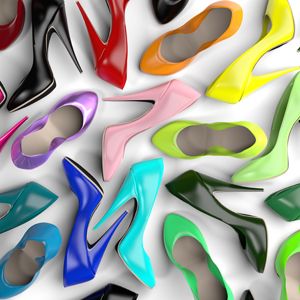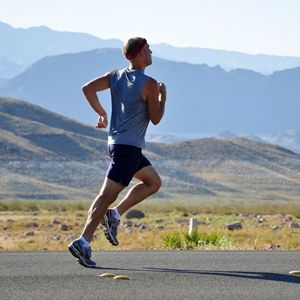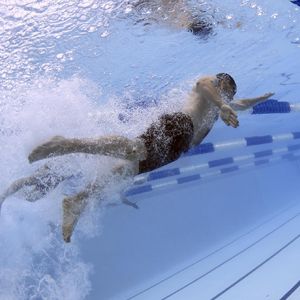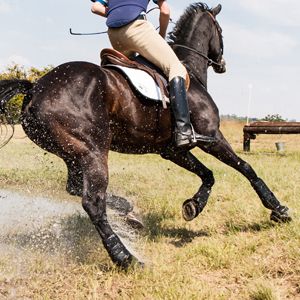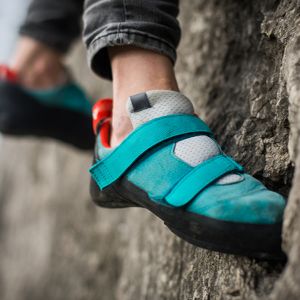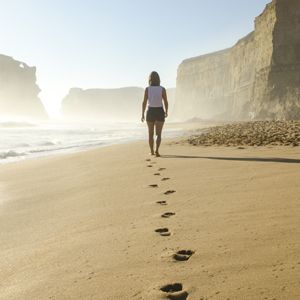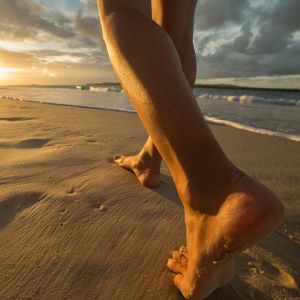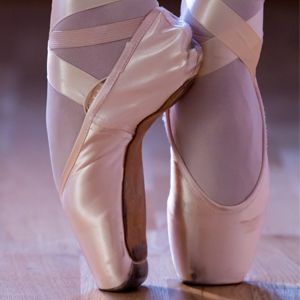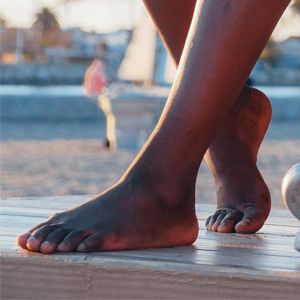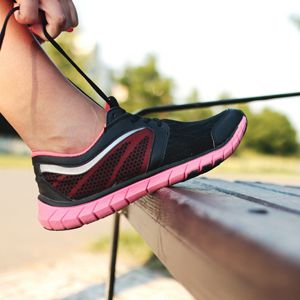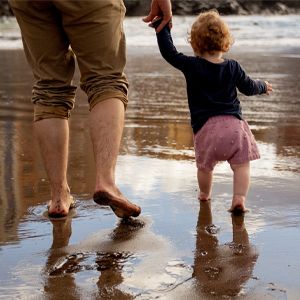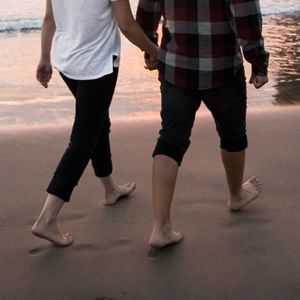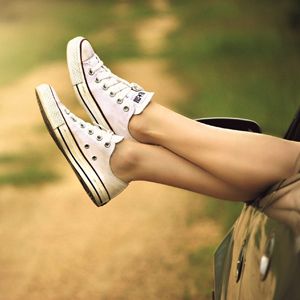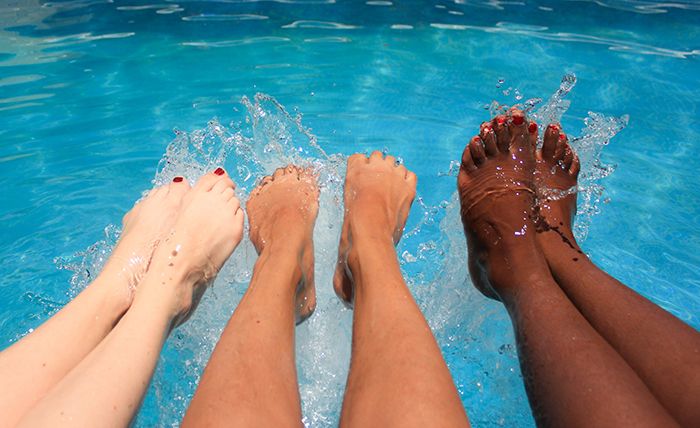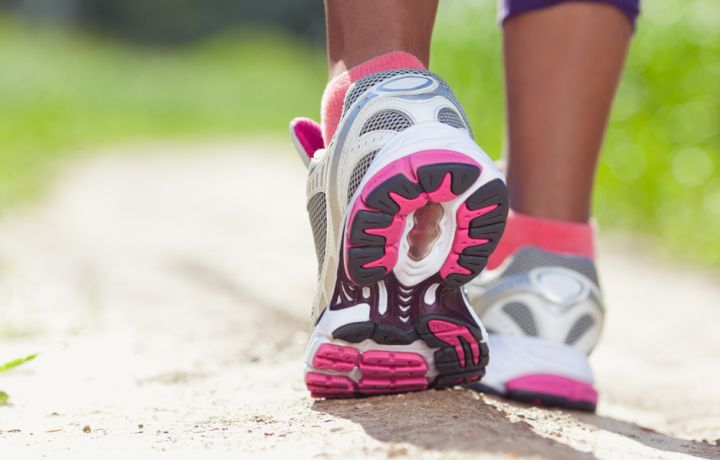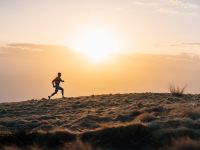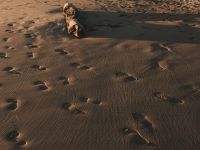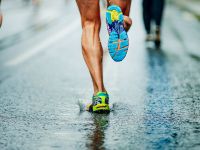Medical School
- University of California, Los Angeles School of Medicine
Residency
- Johns Hopkins Hospital - Orthopaedic Surgery
Fellowship
- Union Memorial Hospital, Baltimore, MD - Orthopaedic Foot and Ankle Surgery
Board Certified
- Orthopaedic Surgery
Marc D. Chodos, MD is an assistant professor of surgery at the George Washington University School of Medicine & Health Sciences. He was born and raised in Southern California. He graduated from the University of California, Berkeley in 1995 with a double major in history and immunology. While at Berkeley, he received multiple academic honors, including Phi Beta Kappa, junior year.
Dr. Chodos attended medical school at the University of California, Los Angeles as a Regents’ Scholar. While at UCLA, he was awarded a fellowship from the American Academy of Allergy, Asthma, and Immunology. He also won the Charles O’Malley Prize for medical history. During medical school, Dr. Chodos spent over one year traveling around the world, training in Swaziland, Africa; Tel Aviv, Israel; and Edinburgh, Scotland. He graduated in 2000.
Following medical school, Dr. Chodos completed a residency in orthopaedic surgery at Johns Hopkins Hospital. After residency, he entered the prestigious Foot and Ankle Fellowship at Union Memorial Hospital in Baltimore. During fellowship, he won the Johnson and Johnson Orthopaedic Research Award and Travel Grant.
After completing his training, Dr. Chodos practiced in San Diego for 12 years, providing sub-specialty foot and ankle orthopaedic care for the Southern California region and beyond. From 2006-2015 he was in private practice, affiliated with Grossmont Orthopaedic Medical Group. He also worked part time at University of California, San Diego training orthopaedic surgery residents and providing sub-specialty care. Dr. Chodos has extensive experience with workers’ compensation, and was affiliated with US Healthworks while in San Diego. From 2015-2018 he provided sub-specialty foot and ankle orthopaedic care with Southern California Permanente Medical Group, and also assisted in training podiatric residents and students. In 2018 Dr. Chodos relocated east, and joined George Washington University- MFA.
Dr. Chodos specializes in foot and ankle orthopaedic surgery, providing both nonoperative and operative care. He has strong interests in sports medicine (including arthroscopy, tendon and ligament repair, and treatment of osteochondral defects), and also foot and ankle reconstruction (including complex deformity and arthritis). He is board certified in orthopaedic surgery. He believes that our feet and ankles are the foundation of our body. In caring for them, his goals include restoring function and improving quality of life.
Dr. Chodos is the associate director of the George Washington University Department of Orthopaedic Surgery residency training program. He has presented nationally and published scientific manuscripts on a variety of topics in foot and ankle surgery, and is currently a reviewer for Foot and Ankle International, Foot and Ankle Orthopaedics, the Journal of the American Academy of Orthopaedic Surgeons, and their affiliated journals.
Dr. Chodos has many interests outside of medicine. He enjoys gardening. He is an avid scuba diver, with rescue diver certification. He has spent time in about 42 countries. Dr. Chodos was also active in the running community for many years. In high school, he was captain of the cross-country and track teams. He founded Berkeley Running Club during college. Additionally, he has run several marathons, starting at age 16. His free time is spent with his wife and three children.
Services
Dr. Chodos specializes in foot and ankle orthopaedic surgery, treating problems below the knee. He provides both non-operative and operative care. He has strong interests in sports medicine (including arthroscopy, tendon and ligament repair, and treatment of osteochondral defects), foot and ankle reconstruction (including complex deformity and arthritis), and forefoot surgery (including bunions, hammer toes, claw toes, and metatarsalgia).
Dr. Chodos is skilled in a wide range of techniques including minimally invasive surgery (MIS) (including bunionectomy, osteotomy, and exostectomy), arthroscopy (including ankle, subtalar, and metatarsophalagneal joint arthroscopy), concentrated bone marrow aspiration (BMAC), platelet rich plasma (PRP), ankle replacement, custom 3d printed implants, RIA bone grafting, and fine wire external fixation.
As a medical doctor and orthopaedic surgeon, Dr. Chodos is able to treat the whole person. He is not limited to just the foot. This opens additional treatment options and techniques that might not be available to other health care providers.
With the backing of a major University and Medical Center, Dr. Chodos is able to provide customized care for complex problems that others cannot. A perfect location for getting things taken care of right the first time, getting a second opinion, or having something that didn’t work out well revised. We provide care to people from Washington DC, Maryland, Virginia, and beyond.
Dr. Chodos believes that the feet and ankles are the foundation of the body. In caring for them, his goals include restoring function and improving quality of life.

Patient Resources
New Patient Appointment / What to Bring:
-
Complete the New Patient Form in advance, and either email it to the office at orthopedics [at] mfa [dot] gwu [dot] edu (orthopedics[at]mfa[dot]gwu[dot]edu) or print it out and bring it with you.
-
If you were a trauma patient at GW Hospital, please know or bring your trauma alias name so that prior records and imaging can be accessed.
-
Dr. Chodos can directly view imaging (xrays, MRI, CT, etc) from GW Hospital, Washington Radiology, Progressive Radiology, and the GW urgent care centers such as Metro IPC. If you have prior imaging that was done elsewhere, please bring the actual imaging on a disc. You can obtain this from the place that did the imaging study. For more complex studies such as MRI, CT, bone scans, and similar, please also bring the report (but the report by itself without the imaging is not sufficient). For foot and ankle problems, as a general rule if you can walk on it then the xrays can be done standing (as opposed to sitting on the xray table). If you do not bring your prior imaging and Dr. Chodos cannot access it online, it will unfortunately probably need to be repeated. If your prior imaging was not done standing, then it may need to be redone at the time of your appointment.
-
If you have had prior surgeries done elsewhere, please bring the operative reports and prior records. If you are transferring care acutely after a surgery, please obtain a postoperative treatment plan from the doctor who did the surgery, so it can be reviewed at the appointment.
-
Try to arrive 20-30 minutes early so that any registration, paperwork, and radiographs can be completed prior to your appointment time. This will greatly improve our ability to maximize your time while at the appointment.
-
Anticipate that the appointment will take some time. Things that MAY need to take place while you are at the appointment include: registration/paperwork, xrays, doctor evaluation, fitting of DME including boots/braces/casts, surgical scheduling, etc. Additionally, Dr. Chodos tends to spend significant time with each new patient.
- Physical Therapy (PT)
- Periop Services
-
Outpatient Surgery:
Inpatient Surgery:
- Anesthesia / Block Team
- Radiology
-
- Washington Radiology | The Leader in Diagnostic Medicine
- Progressive Radiology - Maryland | Washington D.C. | medical diagnostic imaging services - MRI - MRA - CT - CAT - Ultrasound - Sonography - Radiography - X-Rays - Fluoroscopy - Neuroradiology - Body Imaging
- Washington DC Radiology | Diagnostic Imaging (The GW Medical Faculty Associates)
- Radiology and Imaging Center | GW Hospital
- Neurology / Nerve Testing
- Rheumatology
- Pain Management (Complex regional pain syndrome, neuritis, referred pain from the spine)
- Bone Endocrinology
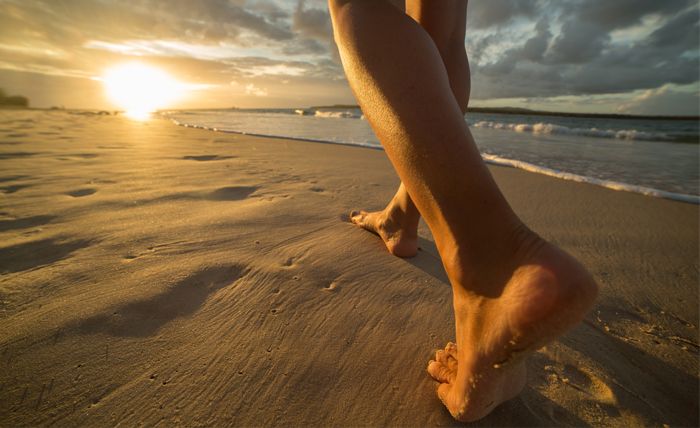
- General Information & Resources
-
There is a lot of information available on the internet, and unfortunately not all of it is accurate. It is important to focus on sources you can trust. The American Orthopedic Foot and Ankle Society has great condition-specific content and resources for just about any problem that involves the foot and ankle. This can be found at https://www.footcaremd.org.
- Ankle
-
Conditions:
- Heel
-
Conditions:
- Hindfoot / Midfoot
-
Conditions:
- Forefoot / Toes
-
Conditions:
- Diabetic Foot
-
Conditions:
- Injections and Procedures

Publications
Chiang, Benjamin J. MD; Malik, Zeeshan BS; Laubach, Logan MS; Minchu, Prem BS; Gu, Alex MD; Chodos, Marc D. MD (2022). Differences of Search Engine Digital Footprints Between Podiatrists and Foot and Ankle Orthopaedic Surgeons: A Need to Join the Digital Era. Journal of the American Academy of Orthopaedic Surgeons.
Ramamurti P, Fassihi SC, Sacolick D, Gu A, Wei C Chodos MD. Impaired renal function is an independent risk factor for complications after surgery for femoral neck fracture. Hip International. Accepted for publication 2021.
Chen, A. Z., Gu, A., Selemon, N. A., Cohen, J. S., Wei, C., Tornberg, H., ... & Sculco, P. K. (2020). Preoperative estimated glomerular filtration rate is a marker for postoperative complications following aseptic revision total hip arthroplasty. European Journal of Orthopaedic Surgery & Traumatology, 1-8.
Chodos M, Sarani B, Sparks A, et al. (2021). Impact of COVID-19 pandemic on injury prevalence and pattern in the Washington, DC Metropolitan Region: a multicenter study by the American College of Surgeons Committee on Trauma, Washington, DC Trauma Surgery & Acute Care Open 2021;6:e000659. doi: 10.1136/tsaco-2020-000659
Chodos, M. D., Parks, B. G., Schon, L. C., Guyton, G. P., & Campbell, J. T. (2008). Blade plate compared with locking plate for tibiotalocalcaneal arthrodesis: a cadaver study. Foot & ankle international, 29(2), 219-224.
Chodos, M. D., & Johnson, C. A. (2009). Hematogenous infection of a total knee arthroplasty with Klebsiella pneumoniae in association with occult adenocarcinoma of the cecum. The Journal of arthroplasty, 24(1), 158-e9.
Chodos, M. D., & Schon, L. C. (2006). Osteochondral lesions of the talus: current treatment modalities and future possibilities. Current Opinion in Orthopaedics, 17(2), 111-116.
Chodos, M. D., & Campbell, J. T. (2007). Intra-articular calcaneal fracture with tarsal coalition treated with open reduction, internal fixation, and isolated subtalar arthrodesis: a case report. Foot & ankle international, 28(9), 1017-1020.
Jacobs, M. A., Kennedy, W. R., Bhargava, T., & Chodos, M. D. (2012). Postresurfacing periprosthetic femoral neck fractures: nonoperative treatment. Orthopedics, 35(5), e732-e736.
Chen, A. Z., Gu, A., Selemon, N. A., Cohen, J. S., Wei, C., Tornberg, H., ... & Sculco, P. K. (2020). Preoperative estimated glomerular filtration rate is a marker for postoperative complications following aseptic revision total hip arthroplasty. European Journal of Orthopaedic Surgery & Traumatology, 1-8.
Miyabara, M., & Chodos, D. M. (2019). Nerve Transection and Implantation Into Bone to Treat Deep Peroneal Nerve Entrapment By an Old Distal Tibial Fracture: A Case Report and Literature Review. The Podiatry Institute Update 2019: The Proceedings of the Annual Meeting of the Podiatry Institute. Chapter 13, 57-60.
Chodos, M. (1996). Sir John Pringle: The Neglected Eighteenth Century Environmentalist.
Latest Podcast
Interesting Foot-Related Tidbits
- Fact or Fiction? The foot has 26 bones
-
It is often quoted that the foot has 26 bones. If you include the bones that make up the ankle, there are 28 bones. This is not entirely accurate though. People generally have 2 sesamoid bones below the base of the big toe, similar to knee caps. Additionally, there is a whole assortment of ossicles or small bones that some people have and others do not. And if this is not complicated enough, some people have bones in the foot that are developmentally connected as one bone instead of two. A common example of this is the last two bones in the small toe. Put it all together and between both feet this accounts for about 25% of all the bones in your body!
- Fact or Fiction? The world's largest feet ever recorded were 18.5 inches long
-
Robert Wadlow (1918-1940) had the largest feet ever recorded. He was 8 foot 11 inches tall and his shoe size was a 37AA (18.5 inches long).
Reference:
- Fact or Fiction? The world's smallest feet are just 5 inches long
-
Jyoti Amge, the world’s smallest person, has the smallest feet of any adult, 3.74 inches long. That is equivalent to a toddler size 2 shoe. She wears size 4 shoes though, to accommodate leg braces.
References:
- Fact or Fiction? Your feet sweat more than any other part of your body
-
The toes and bottoms of the feet have some of the highest concentrations of sweat glands in the body. There are about 500 sweat glands/cm2 on the bottom of the feet, adding up to over 260,000 glands in total. These glands produce relatively less sweat than other areas of the body though, and only account for 2.6-3.6% of the relative contribution towards evaporative heat loss overall.
Reference:
- Fact or Fiction? The most letters typed alphabetically in one minutes using the feet is 251 letters
-
Lui Wei lost both arms in an accident at the age of 10. After many hours of practice, he has learned to play the piano, and won China’s Got Talent in 2010. He holds the Guiness Book of World Records for most letters typed alphabetically in 1 minute using the feet: 251 letters.
References:
- Fact or Fiction? The largest feet ever recorded were 15 inches
-
Actually, Robert Wadlow (1918-1940) had the largest feet ever recorded. He was 8 foot 11 inches tall and his shoe size was 37AA (18.5 inches long).
Reference:
- Fact or Fiction: The smallest recorded adult feet can fit inside a size 2 toddler shoe
-
Jyoti Amge, the world’s smallest person, has the smallest feet of any adult, 3.74 inches long. That is equivalent to a toddler size 2 shoe. She wears size 4 shoes though, to accommodate leg braces.
References:
- Fact or Fiction? The world record for longest toenails is 7 feet
-
Louise Hollis is reported to hold the world record for longest toenails. Set in 1991, the combined length of all 10 toenails was 87 inches. When she wears shoes, they need to be open toed and at least 3 inches high so the nails don’t drag on the ground. According to Guiness Book of World Records, she currently keeps the nails about 6 inches long each.
Reference:
- Fact or Fiction? A Rubik's cube has been solved using only the feet in less than 1 minute
-
The fastest time to solve a standard 3x3x3 Rubik’s cube using only the feet is held by Mohammed Aiman Koli (India). He solved the puzzle in 15.56 seconds at a competition in 2019.
Reference:
- Fact or Fiction? The longest toes, excluding elephantitis, are 4 inches long
-
Actually, the record for longest toes (excluding elephantitis) is held by Matthew McGrory. His big toes measured 5 inches long, and the little toes 1.5 inches.
Reference:
- Fact or Fiction? The thickest skin on your body is on your feet
-
This skin on the bottom of your feet is very special, and is designed to protect you from the rigors of life. It is some of the thickest skin on your body, about 1.5mm thick. It also has one of the highest levels of nerve density, just behind that of the fingers. Things that compromise normal function of this structure can result in ulcers, infection, and worse. Diabetes is the most common cause of damage to the small peripheral nerves in the feet.
- Fact or Fiction? It's possible to become a certified scuba diver even if you have no arms
-
Jessica Cox was born without arms. Despite this, she has learned to use her feet like most people would use their hands. She is a has an unrestricted driver’s license, is a licensed pilot, a certified scuba diver, and holds a third degree black belt in taekwondo. She can even put in and take out her own contact lenses using her toes.
References:
- Fact or Fiction? It's impossible to play the guitar using only your feet
-
Actually, there are many talented people out there who use their feet like hands. Mark Goffeney, born without arms, was a talented musician, playing guitar and bass with his feet. Known as “Big Toe,” he was a professional musician. This documentary is a must watch.
Reference:
- Fact or Fiction? Primates such as monkeys have more highly developed maps of their toes in the somatosensory cortex of the brain compared to humans
-
The somatosensory cortex of the brain contains a highly organized map representing the body. In humans, the region representing the hands and fingers is particularly well developed, but this is not the case for the feet and toes. In fact, most people do not have an individual region for each toe. In contrast, primates such as monkeys have a highly developed map of their toes. To study whether this is something that has been lost in evolution, or is acquired as a result of lack of use of the toes in modern humans, Dempsey-Jones et al used functional MRI to study people born without arms who use their feet for everyday tasks. Interestingly, these individuals had highly developed toe and foot regions in their brains, similar to the hand and finger maps seen in most people. Additionally, the “unused” hand areas of their brain appeared to be recruited to support skilled toe movement and function. This demonstrates the extreme plasticity of the brain.
Reference:
- Fact or Fiction? The most letters typed alphabetically using the feet is 150 letters
-
Lui Wei lost both arms in an accident at the age of 10. After many hours of practice, he has learned to play the piano, and won China’s Got Talent in 2010. He holds the Guiness Book of World Records for most letters typed alphabetically in 1 minute using the feet: 251 letters.
References:
- Fact or Fiction? The longest walkable distance without involving boats or planes would take someone three years to complete
-
“Everywhere is walking distance if you have the time” Steven Wright
The longest walkable distance using roads on earth is from L'Agulhas (near Cape Town), South Africa to Magadan, Russia. It crosses 17 countries and 6 time zones, and involves no boat or air travel. This route covers about 14,000 miles and would take someone walking 8 hours per day over 3 years to complete (if you survive it, since it goes through some of the most dangerous places in the world).
References:
- Bonus Facts: Running
-
“There is a fine line between hobby and mental illness; many a runner has crossed it.” Dean Karnazes
The longest distance run without stopping to eat or sleep was set by Dean Karnazes October 12-15, 2005. He ran 350 miles over 80 hours and 44 minutes without a break. This included taking in about 40,000 calories, going through a lot of shoes, and hallucinating during parts of the last 50 miles. Separately, he once ran 50 marathons in 50 different states, in 50 days. After finishing the final marathon in New York, he then ran back to where he started, St. Louis.
The longest time run continuously without stopping was set by Kim Allen in 2013. While she only ran 310 miles (332 laps around the same park), she didn’t stop for 86 hours, 11 minutes.
The longest distance run continuously while taking breaks to eat and sleep is 12,526 miles, completed in 263 days by Istvan Sipos.
Serge Girard holds the record for longest distance run in 365 days. He ran about 16,784 miles, going through 50 shoes and 25 countries.
Among other ultramarathon records set by Yiannis Kouros is the 24 hour track world record. He ran 188 miles around a track in 24 hours-- averaging 7 minutes and 40 seconds per mile.
The longest running streak is held by Ron Hill. Starting December 21, 1964, he put in a run for 52 years and 39 days before having to miss a day because of an undiagnosed heart condition in 2017.
References:
- What's the Farthest Anyone Has Ever Run Without Stopping? (adventure-journal.com)
- Amazing Athletic Feats - A Review at AthleteInMe.com
- Longest distance run in 365 days - Serge Girard sets world record (worldrecordacademy.com)
- The longest running streak ever ended Saturday at 19,032 days - The Washington Post
- Bonus Fact: The Beer Mile
-
This race involves drinking 4 beers and running 4 x 400m laps (1 mile) around a track in alternating fashion, starting with a beer. The beer choice is the runner’s, but must be at least 12oz per beer and must be at least 5% alcohol. The combined residual liquid and foam from all 4 bottles must be less than 4oz. Vomiting before completing the race is penalized by having to run an additional lap. Not challenging enough? There is also a beer 2 mile race….
World Records:
Men: 4:33.06 Corey Bellemore (Canada)
Women: 6:08.51 Erin O’Mara (USA)References:
- Bonus Facts: World Records
-
Marathon:
Men: 2:01:39 Eliud Kipchoge (Kenya) 4:38 minutes per mile pace
Women: 2:14:04 Brigid Kosgei (Kenya) 5:07 minutes per mile pace10k:
Men: 26:11.00 Joshua Cheptegei (Uganda) 4:13.38 minute per mile pace
Women: 29:17.45 Almaz Ayana (Ethiopia) 4:43.46 minute per mile pace5k:
Men: 12:35.36 Joshua Cheptegei (Uganda) 4:03.66 minute per mile pace
Women: 14:06.62 Letesenbet Gidey (Ethiopia) 4:33.1 minute per mile paceMile:
Men: 3:43.13 Hicham El Guerrouj (Morocco)
Women: 4:12.33 Sifan Hassan (Netherlands)Reference:


